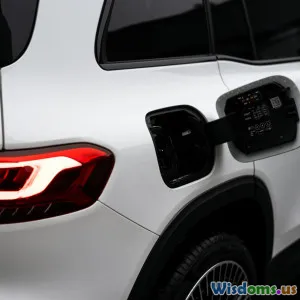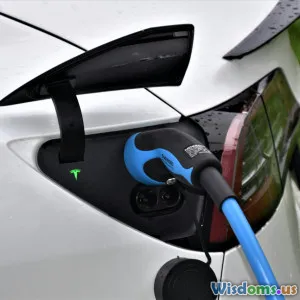
Top Innovations in Vehicle Technology Today
5 min read Explore the latest advancements in vehicle technology shaping the future of automobiles. (0 Reviews)
Top Innovations in Vehicle Technology Today
The automotive industry is undergoing a remarkable transformation, driven by rapid advancements in technology. From electric vehicles (EVs) to artificial intelligence (AI), the innovations shaping today's vehicles are not only changing how we drive but also enhancing safety, efficiency, and sustainability. In this article, we will explore some of the most significant innovations in vehicle technology that are currently making waves in the industry.
1. Electric and Hybrid Vehicles
Electric vehicles have surged in popularity, thanks to advancements in battery technology, increased range, and a growing network of charging stations. Major manufacturers like Tesla, Nissan, and Chevrolet have set the stage for a new era of driving. In addition, hybrid vehicles combine traditional combustion engines with electric propulsion, offering consumers a versatile option that reduces emissions without sacrificing performance.
Example: Tesla Model 3
The Tesla Model 3 has become a benchmark for electric vehicles, offering impressive range, rapid acceleration, and cutting-edge technology, such as over-the-air software updates that enhance vehicle performance and features.
2. Autonomous Driving
Self-driving technology represents one of the most exciting frontiers in vehicle innovation. Companies like Waymo, Uber, and traditional automakers are investing heavily in autonomous systems that promise to revolutionize transportation. These vehicles utilize a combination of sensors, cameras, and AI to navigate roads without human intervention.
Example: Waymo
Waymo's self-driving taxis have been tested extensively in urban environments, showcasing the potential for safer, more efficient transportation options. While fully autonomous vehicles are still in development, semi-autonomous features like adaptive cruise control and lane-keeping assist are already available in many new models.
3. Advanced Driver Assistance Systems (ADAS)
ADAS technologies are designed to enhance vehicle safety and improve the driving experience. These systems include adaptive cruise control, automatic emergency braking, lane departure warning, and parking assist. By leveraging sensors and cameras, ADAS can help prevent accidents and reduce driver fatigue.
Example: Volvo’s Pilot Assist
Volvo’s Pilot Assist feature offers semi-autonomous driving capabilities, allowing drivers to enjoy a more relaxed driving experience while maintaining safety through automated steering and speed control.
4. Vehicle-to-Everything (V2X) Communication
V2X technology allows vehicles to communicate with each other and with infrastructure components, such as traffic lights and road signs. This innovation aims to reduce traffic congestion, improve road safety, and facilitate more efficient driving patterns.
Example: Connected Traffic Lights
Some cities are implementing connected traffic light systems that adjust their timing based on real-time traffic conditions, helping to reduce wait times and improve traffic flow.
5. Sustainable Materials and Manufacturing
As the automotive industry shifts towards sustainability, manufacturers are exploring the use of eco-friendly materials and processes. Innovations include bioplastics, recycled materials, and energy-efficient manufacturing techniques that reduce the environmental impact of vehicle production.
Example: BMW’s Use of Recycled Materials
BMW has been incorporating recycled plastics into their vehicles, demonstrating a commitment to sustainability while maintaining high standards of quality and performance.
Conclusion
The innovations in vehicle technology today are transforming the automotive landscape, making vehicles safer, more efficient, and environmentally friendly. As we continue to embrace electric vehicles, autonomous systems, advanced safety features, and sustainable practices, the future of driving looks promising. The ongoing advancements will not only enhance the driving experience but also contribute to a greener planet, paving the way for a new era of transportation.
Embracing these innovations is essential for consumers, manufacturers, and policymakers alike, as we navigate the challenges and opportunities of the automotive industry’s evolution.
Rate the Post
User Reviews
Popular Posts




















